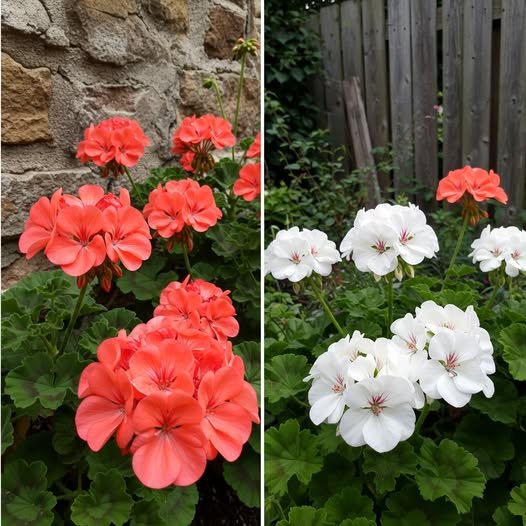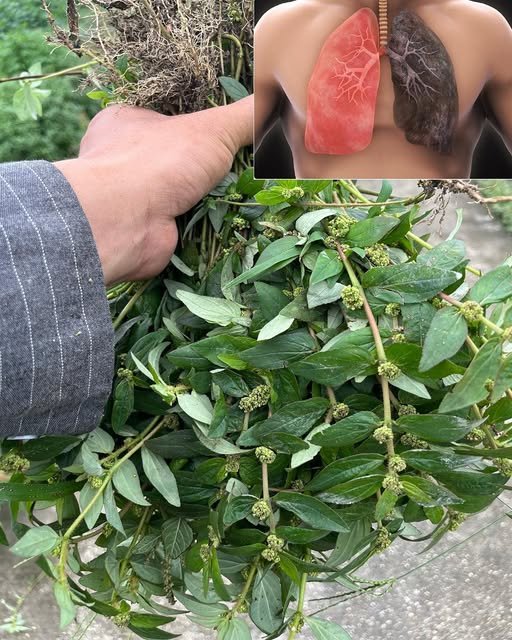Pelargonium, commonly known as nutmeg, is one of the most popular summer flowers, often cultivated on balconies due to its abundant and long-lasting blooms. It flowers from early summer until late autumn. Its simple cultivation, fragrant and ornamental flowers, and adaptability to various climatic conditions have made it a widely grown ornamental and garden plant worldwide.
There are several types of pelargoniums, including shrub, zonal, hanging, and creeping varieties. Zonal and hanging geraniums are usually grown in pots, boxes, or garden beds, while creeping geraniums are ideal for adorning the walls of summer terraces. This South African flower was introduced to Europe in the 18th century, and today, after years of cultivation and hybridization, a wide range of colors is available, including purple, various shades of red, pink, and white.
Depending on cultivation methods, geraniums can be either annual or perennial plants. Commercial hybrids are typically annuals, but some varieties can thrive in the same place for up to three years. After this period, it is advisable to change their location to avoid disease risks. When grown in pots, geraniums pair well with green lilies, petunias, and fuchsias.
Growing geraniums from seeds is not cost-effective in small quantities, so propagation is usually done by cuttings. The best time to propagate geraniums is in August when the flowers are in full bloom. Cuttings should be taken from healthy plants, with the lower leaves and flowers removed to prevent unnecessary nutrient depletion. The cuttings are then placed in a container of water, where they will develop roots. The water should be replenished regularly or completely changed to ensure successful rooting. Once small roots appear, the cuttings are ready to be transplanted into pots filled with a mix of sand and peat.
After transplanting, the soil should be thoroughly watered to encourage root development. Before the next watering, it is crucial to allow the soil to dry slightly to prevent excessive moisture, which can hinder root growth. Young plants should be kept in a sunny and well-ventilated location. In spring, they can be transplanted into larger pots or garden beds with fresh soil.
Good drainage is essential for geraniums, as their roots are sensitive to excessive moisture. Cuttings can also be planted directly into the ground for propagation. In this method, young shoots from older plants are selected, stripped of their leaves, and planted in humus-rich soil. To accelerate rooting, the cuttings can be dipped in natural growth hormones such as willow tea or honey before planting. Once established, the young plants should be watered regularly, ensuring the soil remains moist but not overly wet. They are usually ready for transplantation by April.
Geraniums thrive in loose, well-aerated soil rich in nutrients. Adding humus to the substrate enhances its fertility. A slightly acidic to neutral soil pH is ideal, and mixing in fine sand can further improve aeration. Before planting, it is essential to clear the soil of old roots and debris to allow the geranium roots to spread freely. Additionally, ensuring the soil is free from pests and diseases will prevent future complications.
For continuous blooming, geraniums need to be exposed to sunlight and temperatures above 13°C. The most vibrant flowers are achieved when the plant is placed in a sunny and well-ventilated area, making south-facing balconies an excellent choice. Insufficient sunlight can reduce flowering, while overwatering can lead to root rot and fungal infections.
Before watering, check the top 2 cm of the soil to ensure it is dry. When watering, use rainwater or stagnant tap water to prevent mineral buildup. During hot weather, watering should be done early in the morning or late in the evening to avoid rapid evaporation. Water should be directed at the soil rather than the leaves to prevent fungal infections. Geraniums may need to be watered twice a day in extremely dry conditions. Overwatering can lead to gray mold, which must be treated by removing the infected leaves and applying a fungicide. If the leaf edges turn red, the plant may be experiencing cold stress and should be moved indoors during chilly nights.
Pruning geraniums encourages continuous blooming. Removing spent flowers stimulates new blooms. If grown as a perennial, geraniums should be pruned in spring by pinching off the first vegetative shoots to promote lateral growth. This controls the plant’s height and results in fuller, more vibrant flowers.
Pelargoniums require ample nutrients, especially during the growing season in spring and summer. Liquid mineral fertilizers containing nitrogen, phosphorus, and potassium can be applied during watering, up to twice a month, to support flowering. Various commercial fertilizers designed for geraniums can be found in garden centers and agricultural stores.
Although geraniums can bloom with minimal care, providing them with proper nutrients and pruning will ensure more vigorous growth. Like most flowers, they have a dormant phase during the cold months. In winter, they should be brought indoors, with watering reduced to once a month. The plants should be kept in a cool, dark place until spring. Before moving them outdoors in warmer months, remove any dried flowers and branches, then soak the entire pot in water to rehydrate the soil. Gradually transition the plants to warmer temperatures before exposing them to full sunlight.
Older plants benefit from occasional soil aeration and weeding to ensure adequate air circulation. If plants are grown from seeds and become overcrowded, thinning may be necessary. Ideally, a spacing of at least 15 cm should be maintained between plants to allow sufficient growth.
Annual geraniums do not require pruning, but perennial varieties should have dried parts and spent flowers removed regularly. Pruning is best done in spring when the plant is developing. Throughout the growing season, monitor the plant’s health and remove faded blooms to encourage new ones. Since not all flowers mature simultaneously, periodic harvesting ensures a continuous floral display. For cut flowers, it is best to harvest early in the morning using sharp, angled cuts to maintain the plant’s health.
Geraniums are relatively resistant to diseases and pests, but occasional infestations can occur. Natural remedies, such as spraying with milk, can enhance plant immunity and protect against pests. Milk contains essential minerals like potassium, calcium, phosphorus, and magnesium, which promote healthy growth. A diluted milk solution (1 part milk to 10 parts water) can be applied once a month to enhance flower color and overall plant vigor. Additionally, natural pest control solutions using nettle extract or baking soda can be effective against common plant diseases.
For severe pest infestations or diseases, garden centers and agricultural suppliers offer specialized fungicides and insecticides. By following these care tips, geraniums will continue to thrive, providing a beautiful and long-lasting floral display in any garden or balcony.



